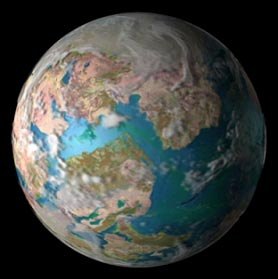“Astro Comb” will scout for Earthlike planets
 Washington, April 3: A new technology dubbed as the “Astro Comb”, which is the scientific equivalent of a fine-toothed comb, may soon start search for Earthlike planets outside our solar system.
Washington, April 3: A new technology dubbed as the “Astro Comb”, which is the scientific equivalent of a fine-toothed comb, may soon start search for Earthlike planets outside our solar system.
According to a report in National Geographic News, the technology improves on a highly successful planet-hunting technique called the radial velocity, or wobble method, which looks for small shifts in the wavelengths of a star’s light caused by the gravitational tug of an orbiting planet.
So far, astronomers have found more than 270 exoplanets, many using the wobble method, but none of them are Earth-size. That’s because the technology has not been able to measure the very small spectral shifts caused by smaller worlds orbiting in a star’s habitable zone.
The performance of the instruments astronomers use to observe starlight often “drifts” due to Earthly factors such as temperature and pressure variations.
Scientists therefore need to continuously recalibrate the instruments by comparing starlight to a standard light.
The new technique called the astro-comb; boosts sensitivity to smaller wobbles via a “comb” of laser lines covering a wide range of the optical spectrum, creating a perfect ruler for calibration.
“This improved sensitivity is required to find lighter planets like Earth analogs, because such lighter planets pull less strongly on stars,” said lead study author Chih-Hao Li, a researcher at the Harvard-Smithsonian Center for Astrophysics.
“The astro-comb is revolutionary, because it will enable astrophysical spectrographs to be much more sensitive to changes in the radial velocity of stars,” he added.
The astro-comb will also continuously adjust itself to match the atomic clock, making its astrophysical spectrographs extremely stable over long periods.
“This is important because planets in Earthlike orbits take longer to go around their host stars, so measurements need to be taken over longer time frames,” said Li.
Li and his colleagues plan to test the astro-comb this summer at the MMT Observatory on Mount Hopkins in Arizona.
They first hope to demonstrate how the astro-comb can calibrate the facility’s spectrograph to help measure the effects of dark matter on stellar motion in very old groupings of stars called globular clusters.
Then, the researchers plan to use the improved technique to search the sky for small, rocky planets similar to Earth. (ANI)